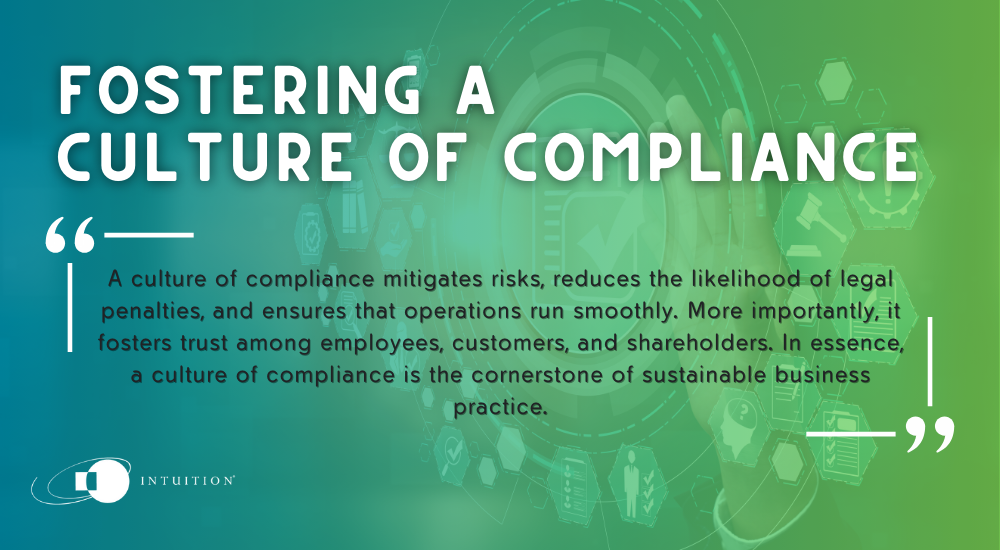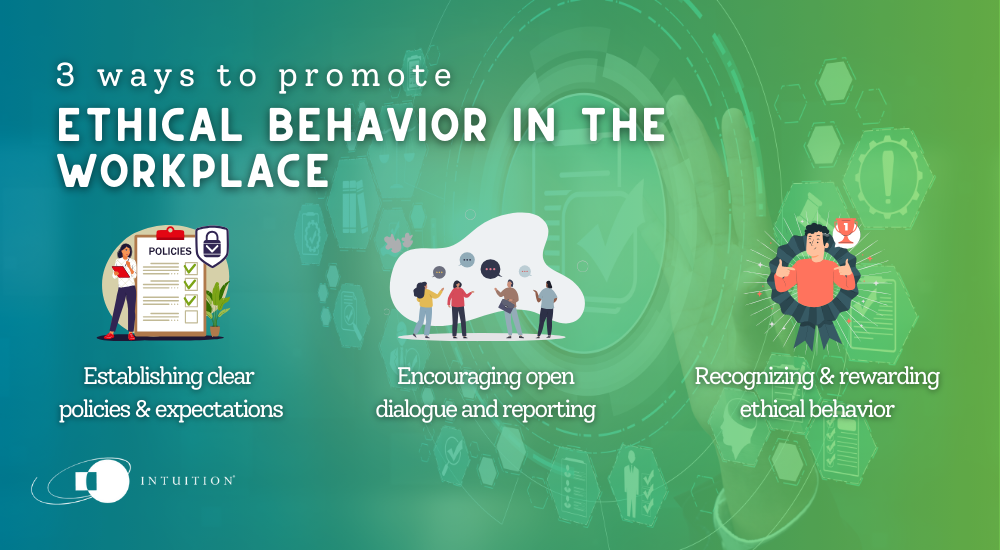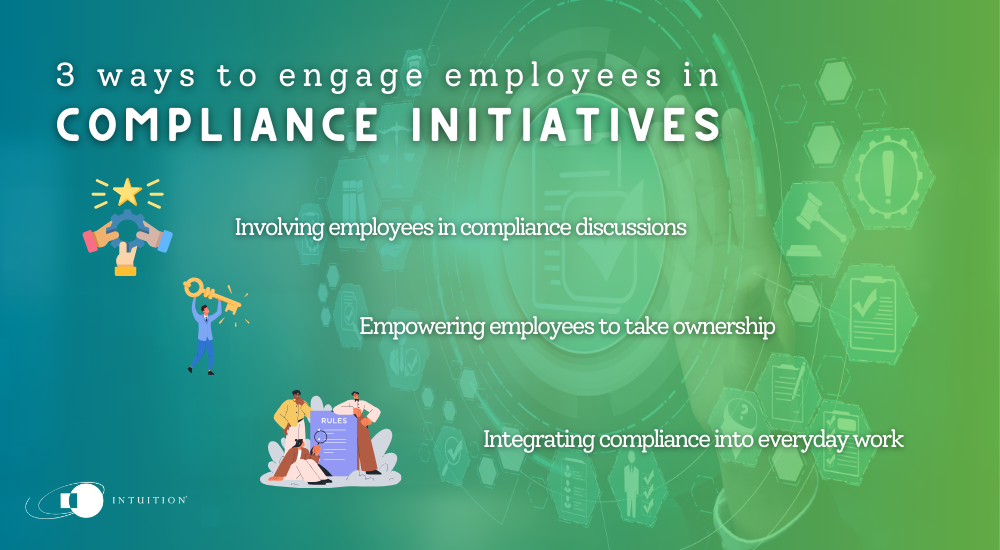Strategic approaches to fostering a culture of compliance
In a world where regulations are increasingly stringent, and ethical expectations from stakeholders are high, fostering a culture of compliance within an organization is imperative. For managers, this means navigating a complex landscape of legal requirements, ethical dilemmas, and organizational dynamics.
This article examines the importance of fostering a culture of compliance within organizations and provides practical strategies for compliance managers to promote ethical behavior, with an emphasis on accountability and transparency. Let’s delve into the intricacies of building a robust compliance culture and explore the strategies that can help managers lead the charge.
Related articles:
Understanding the importance of a culture of compliance

Why compliance matters
The bedrock of a successful organization is its commitment to compliance. Adherence to laws, regulations, and ethical standards is essential not only for legal reasons but also for maintaining a company’s reputation. A culture of compliance mitigates risks, reduces the likelihood of legal penalties, and ensures that operations run smoothly. More importantly, it fosters trust among employees, customers, and shareholders. In essence, a culture of compliance is the cornerstone of sustainable business practice.
The business case for compliance
Beyond avoiding legal repercussions, there is a compelling business case for creating a culture of compliance. Companies known for their ethical practices often enjoy improved market perception, which can translate into financial gains. Investors are increasingly attracted to organizations that demonstrate corporate responsibility. Furthermore, a strong compliance framework can streamline internal processes, leading to increased efficiency and cost savings.
The ripple effect of non-compliance
On the flip side, the consequences of non-compliance can be disastrous. Financial penalties, damaged reputations, and loss of business are just the tip of the iceberg. Non-compliance can also lead to a toxic work environment, low employee morale, and high turnover rates. It is crucial for managers to recognize the far-reaching impact of compliance, or the lack thereof, on every aspect of their organization.
Role of leadership in fostering compliance culture
Leading by example
Leadership plays a pivotal role in shaping the culture of an organization. When leaders prioritize compliance and ethical behavior, it sets a powerful example for the rest of the company. Managers need to walk the talk by adhering to the same standards they expect from their employees. This demonstration of commitment can inspire employees to follow suit, creating a unified culture of compliance.
Creating a vision for compliance
A clear vision for what compliance looks like within an organization is essential. Leaders should articulate this vision in a way that resonates with employees and aligns with the company’s core values. By integrating compliance into the organizational ethos, managers can ensure it is not seen as a mere set of rules but as a fundamental aspect of the company’s identity.
The importance of open communication
Open communication is the lifeblood of a compliance culture. Leaders must foster an environment where employees feel comfortable discussing compliance issues without fear of retribution. Regularly addressing the importance of compliance, openly discussing challenges, and celebrating compliance successes can reinforce its value within the organization.
Strategies for promoting ethical behavior in the workplace

Establishing clear policies and expectations
One of the first steps in promoting ethical behavior is to establish clear policies and expectations. These should be documented, easily accessible, and communicated to all employees. Policies must not only outline what is expected but also the rationale behind these expectations, helping employees understand the ‘why’ of compliance.
Encouraging open dialogue and reporting
Creating channels for open dialogue and reporting is critical. Employees should have safe and confidential ways to report unethical behavior or compliance concerns. This transparency helps to catch potential issues early and demonstrates the organization’s commitment to addressing problems head-on.
Recognizing and rewarding ethical behavior
Recognition and rewards for ethical behavior can reinforce the right actions. Whether through formal awards, promotions, or simple acknowledgments, celebrating instances of exemplary compliance can motivate employees to uphold high ethical standards.
Accountability and transparency: The cornerstones of compliance
The role of accountability in compliance
Accountability is key to ensuring that compliance is taken seriously at all levels of the organization. When employees know they are accountable for their actions, they are more likely to adhere to compliance standards. This includes establishing consequences for non-compliance, which should be consistently and fairly applied.
Fostering a transparent culture
Transparency goes hand in hand with accountability. A culture where decision-making processes are open and where business dealings are conducted in the light fosters trust and integrity. When employees see transparency in action, they feel more secure in upholding compliance standards themselves.
Regular monitoring and reporting
Ongoing monitoring and reporting are essential for maintaining compliance standards. Regular audits, risk assessments, and compliance reviews can help identify areas for improvement. Sharing the results of these activities, along with action plans for addressing any issues, can reinforce the importance placed on compliance and transparency.
Engaging employees in compliance initiatives

Involving employees in compliance discussions
Engagement starts with inclusion. Managers should involve employees in discussions about compliance issues and initiatives. This collaborative approach not only taps into a diverse set of perspectives but also helps employees feel invested in compliance outcomes.
Empowering employees to take ownership
For compliance to become second nature, it must be integrated into everyday work practices. By embedding compliance considerations into daily routines and decision-making processes, employees will begin to operate with a compliance mindset as a matter of course.
Integrating compliance into everyday work
Ongoing monitoring and reporting are essential for maintaining compliance standards. Regular audits, risk assessments, and compliance reviews can help identify areas for improvement. Sharing the results of these activities, along with action plans for addressing any issues, can reinforce the importance placed on compliance and transparency.
Training initiatives to enhance compliance culture
Tailored compliance training programs
Tailored training programs that consider the specific roles, responsibilities, and risks faced by employees can lead to a deep understanding and strong adherence to compliance requirements.
Continuous learning opportunities
Compliance is not a static field; it evolves with changes in laws, regulations, and societal expectations. Continuous learning opportunities, such as regular workshops, seminars, and eLearning modules, can keep employees up-to-date and engaged with the latest compliance trends and best practices.
Measuring the effectiveness of training
It is not enough to simply provide training; the effectiveness of these initiatives must be measured. Surveys, assessments, and feedback sessions can help determine whether employees are retaining and applying the knowledge gained from compliance training programs.
Overcoming challenges in building a culture of compliance
Addressing resistance to change
Change is often met with resistance, and the shift towards a culture of compliance is no exception. Managers must anticipate and address this resistance by demonstrating the value of compliance, providing support during transitions, and maintaining open lines of communication.
Balancing compliance with business goals
Finding the balance between maintaining compliance and achieving business goals can be challenging. Managers need to ensure that compliance efforts do not stifle innovation or competitiveness. Striking this balance requires a nuanced approach that integrates compliance into business strategies rather than viewing it as a separate or conflicting effort.
Ensuring consistency across the organization
Consistency is crucial for a credible compliance culture. This means that compliance standards must be upheld across all departments, locations, and levels of the organization. Managers can achieve this consistency by standardizing procedures and ensuring that compliance messages are uniform throughout the company.
Compliance management tools and services
Leveraging technology for compliance
Technology plays a significant role in modern compliance management. Compliance management tools can automate processes, monitor risks, and provide valuable data insights. Investing in the right technology can greatly enhance an organization’s compliance efforts.
The role of external services
External services, such as compliance consultants and legal experts, can provide specialized knowledge and support. These resources can be particularly valuable for navigating complex regulations or for organizations that lack in-house compliance expertise.
Integrating tools and services with internal efforts
While tools and services are beneficial, they should not replace internal compliance efforts. Instead, they should be integrated into the organization’s overall compliance strategy, enhancing and supporting the work done by employees.
Conclusion: The future of compliance in organizations
The evolving landscape of compliance
The landscape of compliance is continuously evolving, with new challenges and opportunities emerging regularly. Organizations must remain agile, adapting their compliance strategies to meet changing demands and expectations.
Commitment to continuous improvement
A commitment to continuous improvement is essential for future compliance success. This means not only keeping abreast of regulatory changes but also seeking out ways to enhance the culture of compliance within the organization.
The enduring value of a culture of compliance
In conclusion, the value of a culture of compliance cannot be overstated. It is a critical component of any successful organization, providing a foundation for ethical conduct, risk mitigation, and overall business excellence. By embracing the strategies outlined in this article, managers can lead their organizations toward a future where compliance is ingrained in the corporate ethos.


